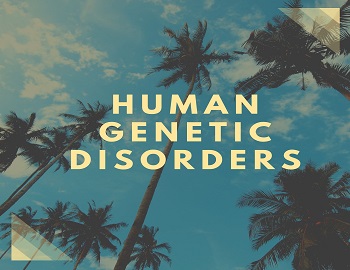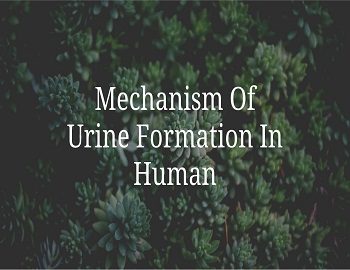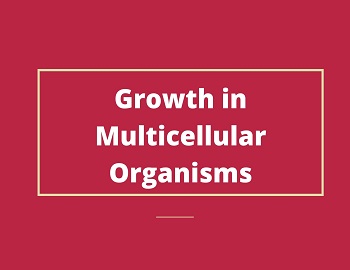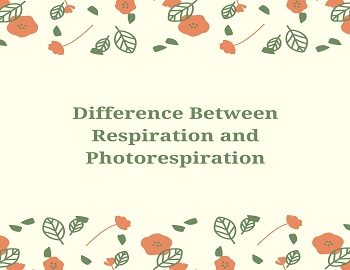Table of Contents
Human Genetic Disorders:
Those disorders that are caused due to genes, their mutations and are transmitted from parent to offspring are called Genetic disorders. These disorders can occur in following ways-
Numerical Changes in Chromosomes:
- Down’s Syndrome (Mongolism, Mongolian Idiocy)- The syndrome was discovered by Langdon Down in 1866. Its cause was found out by J. Lejeune in 1959. It is an aneuploid trisomic condition having 47 chromosomes i.e. the male has 45 + XY and the female has 45 + XX. This condition arises due to the nondisjunction of the 21st pair of chromosome so that both the chromosomes are passed to the same gamete. This syndrome is commonly found in aged woman i.e. if they get pregnant after 40 years. It has been found that out of 600 children born one always show this disorder. The sufferer’s show a round face, broad forehead, flattened nasal bridge, flat hand, round eyelid fold, stubby fingers, little intelligence, under-developed gonads and genitalia.
- Alzheimer’s Disease- It is a degenerative disease of the brain which is caused by two autosomal defective alleles, one on chromosome 21 and the other on chromosome 19. The most common type of Alzheimer’s disease is caused by the E 4 allele of chromosome 19. There is a deposition of senile plaques in the nervous system due to the non-metabolism of amyloid β-peptide. This protein destroys the neurons or nervous system and hence the individual lacks the power of memory, power of learning skills as well as intelligence and death may also occur.
Numerical Changes in Sex Chromosomes:
- Klinefelter’s Syndrome- In this type, the zygote has one extra sex chromosome i.e. 44A + XXY. This condition arises due to the fusion of abnormal sperm carrying XY chromosome with normal egg carrying X chromosome or fusion of normal sperm carrying Y chromosome with abnormal egg carrying XX chromosome. The zygote with the XXY chromosome is an infertile male having many features of females (example- breast). He has small testes, mental retardness, obesity, unusually long leg etc. Out of two thousand birth, one always develops Klinefelter’s syndrome.
- Turner’s Syndrome- The turner’s syndrome has XO Genotype in a zygote. This condition results due to the fusion of normal sperm with X chromosome with abnormal egg without sex chromosome. This disease is characterized by the presence of 45 chromosomes (2n-1), infertile female with underdeveloped breasts, reduced ovaries, a small uterus, loose skin of the neck, mostly normal intelligence and short stature, and with many male features such as heavy neck muscles and narrow hips. Out of five thousand birth, one always develops Turner’s syndrome.
Gene Mutations in Autosomes:
- Alcaptonuria (Alkaptonuria)- It is an inborn metabolic disorder produced by the action of a single gene. The disease is characterized by the darkening of certain cartilages and the blackening of urine upon exposure to air. The urine of sufferers contains homogentisic acid or alcaptane that combines with air (O2) and converted to a black pigment. This pigment is deposited in cartilage, ears and nose. This disease arises due to the lack of a liver enzyme, homogentisate oxidase that breaks homogentisic acid. Therefore, homogentisic acid accumulates and excreted in the urine of sufferers.
- Phenylketonuria- It is an inborn error of metabolism caused by a recessive allele present on chromosome 12. It is characterized by extreme mental retardness in children. The suffering children are called phenyl pyruvic idiots because they are unable to break down phenyl pyruvic acid into hydroxy-phenyl pyruvic acid due to lack of the enzyme phenylalanine hydroxylase. Therefore, phenylalanine accumulates in tissue and also changes in phenyl pyruvic acid.
- Albinism- This disorder causes due to a lack of melanin pigment because the gene that forms the tyrosinase enzyme for the formation of melanin pigment is destroyed due to mutation in the gene. The person who has this disorder when exposing to sunlight has many chances of skin cancer.
- Sickle Cell Anaemia- This is an autosome linked recessive trait that can be transmitted from parents to the offspring when both the parents are a carrier for the gene (heterozygous). The disease is controlled by a single pair of allele, HbA and HbS. Out of the three possible genotypes only homozygous individuals for HbS (HbSHbS) show the diseased phenotype. Heterozygous (HbAHbS) individuals appear apparently unaffected but they are a carrier of the disease as there is a 50% probability of transmission of the mutant gene to the progeny, thus exhibiting sickle cell trait. It is caused by the substitution of valine for glutamine at the sixth position in the β chain of the globin molecule of haemoglobin. The mutant haemoglobin molecule undergoes polymerization under low oxygen tension causing the change in the shape of the RBC from biconcave disc to an elongated sickle-like structure. Individuals with this disease suffer attacks due to the aggregation of red blood cells. These erythrocytes are destroyed more rapidly than the normal RBCs leading to anaemia.
Gene Mutations in Sex Chromosome:
Certain mutations located in the genes of the sex chromosome cause sex-linked disorders and their inheritance is called sex-linked inheritance. Usually, the male has one X chromosome and the female has two X, X chromosomes and the genes that show sex-linked disorders are located on the X chromosome only. These disorders include-
- Haemophilia- Haemophilia is the most serious and notorious disease which is more common in men than women. This is also known as bleeder’s disease. The person having the recessive gene for haemophilia lacks in normal clotting substance in blood so that even minor injuries cause continuous bleeding and ultimate death of the person due to haemorrhages. John Otto (1803) reported this hereditary disease for the first time. A famous case of haemophilia is traceable in the royal houses of Europe where we observe that Queen Victoria of England and her progeny were having this disease. There is no cure for haemophilia. It may sometimes luckily disappear due to a back mutation.
- Red-Green Colour Blindness- Colour blindness occurs more often in males than females. The individuals suffering from this disease cannot differentiate between red-green colours. This disease is caused by a recessive gene where one of the primary cone pigment of the retina is absent.
- Night Blindness- It is of two types- acquired and congenital. The former is due to vitamin A deficiency. The congenital night blindness is due to a visual purple deficiency that interferes with the functions of the retinal rods. This night blindness is a sex-linked trait. It is caused by a recessive gene carried by the X chromosome. Like other sex-linked traits, night blindness is also more common in males.
- Cystic Fibrosis- The individual suffer from lung clogging and disorder of digestive system.
- Muscular Dystrophy- It is a genetical inborn metabolic disorder in which a protein Dystrophin is not formed due to mutations of genes and hence there is no secretion of calcium ions resulting in halting of contraction of muscles. The victim becomes invalid by the age of 10 and usually dies by the age of 20.









Comments (No)